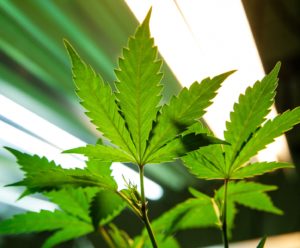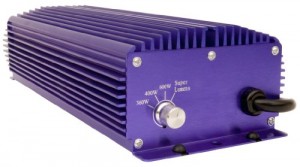
A ballast is a device that regulates specific starting requirements and line voltages for a specific HID (High-Intensity Discharge) lamp. There are many brands of ballasts in the marketplace yet there are only two (2) main types of ballasts for marijuana growing.
Ballasts can be either magnetic ballasts that use transformer coils or they can be digital/electronic ballasts that use electronic components. Electronic ballasts run cooler, quieter, and more efficiently than magnetic ballasts that run hotter, louder, and less efficiently.
Electronic ballasts often provide higher quality and clearer light spectrum than magnetic ballasts. When purchasing ballasts that are made in China or Asia you will need to be extremely careful as these at times not made the best.
Be sure to purchase your marijuana-growing equipment through a reputable supplier of growing equipment. Magnetic ballasts contain a transformer core, a capacitor (High-Pressure Sodium [H.P.S.] and some halides), a starter, wires, and a containing box.
Digital or electronic ballasts contain diodes, capacitors, high-frequency transistors, inductors, transformers, and resistors. You never want to mix and match ballasts, hoods, and/or light bulbs if they are not made for each other.
Doing so could damage your equipment, blow up, not start, not provide proper lighting or spectrum or even cause a fire. Talk with a sales representative to make sure what you are purchasing is compatible with other equipment.
Purchase Whole Lighting Kits

Many times, it is more economical to purchase whole lighting kits where they are all compatible, which will often save you time and money throughout the purchasing process. Though if you want a different bulb, hood, or ballast than the kits provide then you will need to spend extra time researching or asking which ones are compatible.
It may cost a little extra money to purchase everything individually for marijuana growing, however, the benefit of this is that you will get what you want. Never purchase parts, ballasts, reflectors, etc. from a junkyard or other conspicuous places.
If a component of the part is bad or you mix one part with another that is not fully compatible, you risk having serious issues. If a bulb fits into a socket, it doesn’t mean that it is compatible or will work.
Some people will use old streetlights to utilize for growing marijuana. Don’t do this, those lights are made for different use and are not the best for growing marijuana.
It is always worth it to purchase new or used ones (if you know the person and they are reputable). If you are purchasing equipment that is used, refurbish, or new always keep an eye out for light and ballast problems.
If lights continue to flicker (this is natural when starting) after 20 minutes of running, serious noises are occurring from the ballast or the ballast is heating to more than 150° F (60° C) or your lights do not turn on…what do you do???
Turn your lighting system off and have it checked out. You may need something replaced since these small problems can turn into large problems (fire, bulbs blowing, etc.).
If problems occur, shut the system down to check to make sure that wires, bulbs, ballasts, and hoods are all compatible and correctly connected. If they are then it is probably a problem with the ballast.
You should disconnect the ballast and take it in to be checked out. Even though HIDs have specific ballasting requirements for different bulb types, most all ballasts are very similar in how they are built and operated.
All ballasts create heat (80 – 150° F or 26 – 60° C) and generate some sort of noise. Some more expensive ballast types are equipped with small ventilation fans to cool the ballast, making them more efficient for marijuana growing.
There are some industrial ballast types for growing marijuana that are made from completely sealed fiberglass to make them waterproof for use outdoors, do not use these types indoors since they will operate at high temperatures and radiate more heat.
Let us know what you think.




Responses